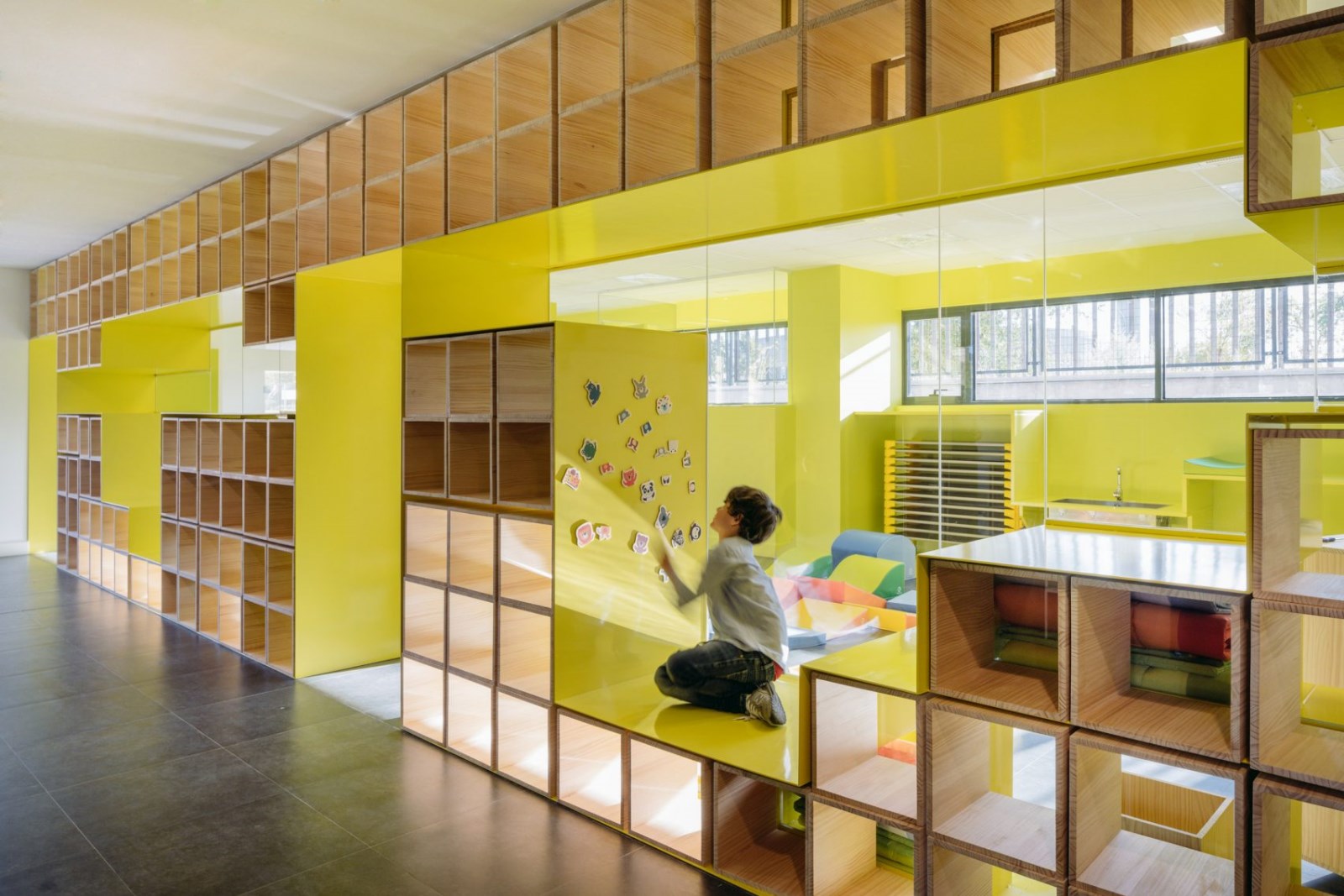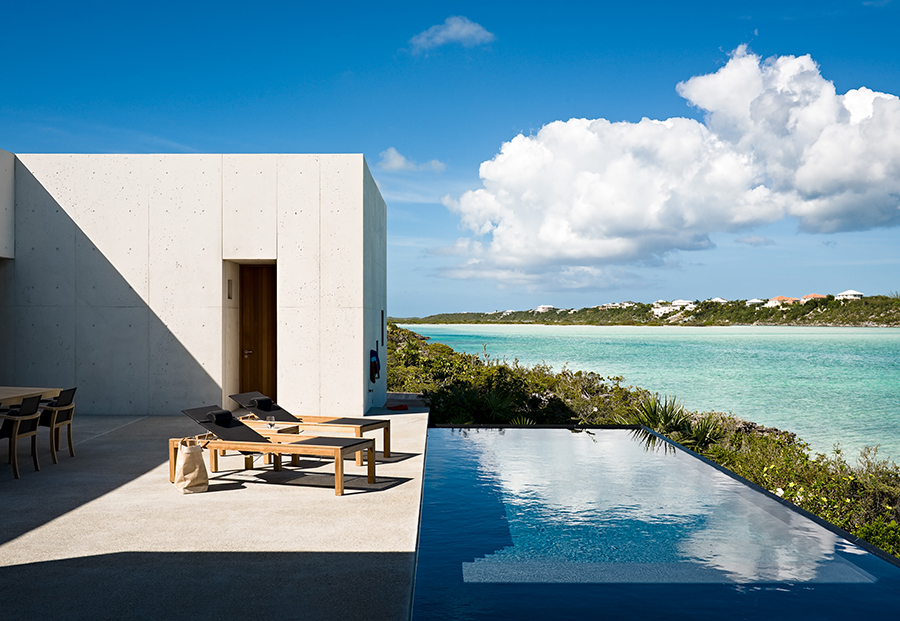AD Classics Acropolis of Athens Ictinus, Callicrates, Mnesikles and Phidias
2017-02-22 04:00
Throngs make their way up the causeway to the Acropolis in this artistic imagining of the Panathenaic Procession.. ImageCourtesy of Yale University Press
这群人沿着堤道往雅典卫城走去,在这一艺术想象中,我们看到了帕纳塞尼亚式的游行队伍.形象-耶鲁大学出版社的礼貌
帕特农神庙的结构一旦到位,伯里克利就委托进行下一个伟大的项目:普罗皮拉亚。它位于建筑群的西端,是通往卫城的唯一入口。就像它之前的帕台农神庙一样,这座新建筑是用五旬节大理石建造的-这表明为它的建造提供了慷慨的预算。建筑师Mnesikles面临着将陡峭的坡地与希腊古典建筑标准相协调的挑战,他将建筑分为东西方两部分,每个部分都有自己的多里克柱廊和山墙。这两根中央柱子之间的空间比其他两根柱子要大,这是一种因实际问题而产生的不规律:在穿过城市并爬上一条漫长的堤道后,在这里,在帕纳塞尼亚游行期间,动物和战车每四年会进入雅典卫城;庆祝雅典人通过楼梯进入两边。[1,2]
Once the structure of the Parthenon was in place, Pericles commissioned the next great project: the Propylaea. Situated at the western end of the complex, the monumental gateway was the sole entrance to the Acropolis. Like the Parthenon that preceded it, the new structure was built of Pentelic marble – an indication of the generous budget that financed its construction. The architect Mnesikles, faced by the challenge of reconciling a steep sloping site with the prevailing architectural standards of Classical Greece, split the building into eastern and western sections, each with its own Doric colonnade and pediment. The space between the two central columns was greater than that of the others, an irregularity born from practical concerns: after making their way through the city and climbing a lengthy causeway, it was here that the animals and chariots would pass into the Acropolis every four years during the Panathenaic Procession; the celebrating Athenians entered via stairways to either side.[1,2]
Although the western façade of the Propylaea has not survived the passage of time, its columns still stand guard at the entrance to the Acropolis. ImageCourtesy of Flickr user Thomas Hackl (licensed under CC BY-NC 2.0)
虽然普罗皮拉亚的西面没有经过时间的流逝,但它的柱子仍然守卫着卫城的入口。Flickr用户Thomas Hackl的图像礼貌(由-NC2.0授权CC)
西面的侧翼是两个封闭的翅膀。东北侧的机翼是唯一要完成的,在罗马时代,它明显地被用作图片库,或者说皮纳科克(Pinakotheke);尚不清楚这是否是空间的最初用途,但如果是的话,它是历史上第一个用来展示艺术作品的已知结构。[3]与帕台农神庙的建筑师一样,Mnesikles选择使用离子柱作为普罗皮亚亚的内部,表明这种综合是当时雅典建筑的流行趋势;然而,直到希腊化时期,不同的秩序才会混合在同一个门面上。
Flanking the western façade were two enclosed wings. The wing to the northeast, the only one to be completed, was notably used as a picture gallery, or pinakotheke, in Roman times; it is unknown if this was the original purpose of the space, but if so, it is the first known structure in history intended for the display of works of art.[3] Like the architects of the Parthenon, Mnesikles chose to use Ionic columns for the interior of the Propylaea, suggesting that this synthesis was the prevailing trend in Athenian architecture at the time; however, different orders would not be mixed in the same façades until the Hellenistic period.[4]
These Ionic columns, standing in what was once the interior of the Propylaea, can be readily contrasted with their Doric counterparts at the bottom of the picture. ImageCourtesy of Flickr user lovemonlin (licensed under CC BY-NC-ND 2.0)
这些离子柱,站在曾经的内部普罗皮亚亚,可以很容易地与他们的多里克对应的图片底部。Flickr用户loveemonlin的图像礼貌(由-NC-ND2.0认证)
公元前431年,伯罗奔尼撒战争爆发。在雅典卫城的工作10年后完全恢复的时候,它并不在网关上,原来的计划从来没有完全实现过。取而代之的是,这座城市和第二个寺庙一起向前移动:Erechtheon。[5]在波斯战争之前,帕台农神庙和埃雷切特的前身是一对标准的庙宇,相互平行,几乎没有区别。帕台农神庙在其规模和比例上打破了传统,但埃雷切蒂森的复杂布局似乎放弃了其前任所设定的先例。[6]
The outbreak of the Peloponnesian War in 431 B.C. suspended work on the Propylaea. When work on the Acropolis fully resumed ten years later, it was not on the gateway – the original plans for which were never fully realized. Instead, the city moved forward with a second temple: the Erechtheion.[5] Before the Persian Wars, the predecessors to the Parthenon and the Erechtheion had been a pair of standard temples, placed parallel to one another and virtually indistinguishable. While the Parthenon broke from tradition in its scale and proportion, the complex layout of the Erechtheion seemed to abandon the precedent set by its predecessor altogether.[6]
The irregular layout of the Erechtheion was a response to both complicated topography and the multifaceted religious significance of the ground on which it stands. Original etching by Ernst Wallis, 1875. ImageCourtesy of Wikimedia user HerrAdams (Public Domain)
神盾的不规则布局是对复杂的地形和它所处的地面的多方面宗教意义的反应。原始蚀刻由恩斯特沃利斯,1875年。维基媒体用户HerrAdams(公共领域)的形象礼貌
和普罗皮亚亚一样,Erechtheion通过使用不同层次的多个空间和立面来适应其站点的不规则地形。事实上,这一方法惊人的相似,使一些历史学家猜测,Erechtheion也是Mnesikles的作品。然而,值得注意的是,对于这座寺庙不协调的不对称,有一个不那么平凡的解释:它所处的地点对雅典建国神话故事中的多个神灵具有重要意义,需要一个单一的结构来同时发挥多座寺庙的作用。
As with the Propylaea, the Erechtheion adapts to the irregular topography of its site through the use of multiple spaces and façades at different levels. The striking similarity of this approach, in fact, has led some historians to conjecture that the Erechtheion was also the work of Mnesikles. It is worth noting, however, that there was a less mundane explanation for the temple’s incongruous asymmetry: the site on which it stood, bearing significance for multiple deities involved in the mythological tale of the founding of Athens, required a single structure to function as multiple temples simultaneously.[7]
Courtesy of Flickr user Aleksandr Zykov (licensed under CC BY-SA 2.0)
Flickr用户Aleksandr Zykov提供(CC由-SA2.0授权)
根据传说,爱神站在雅典娜和波塞冬争夺对阿提卡统治的地方。波塞冬用他的三叉戟击打地面,产生了一股咸水;这座寺庙的北门廊从光滑的大理石墙的一端伸出,遮住了岩石中留下的三叉戟痕迹。作为对波塞冬展示力量的回应,雅典娜用她的长矛击中地面,从岩石上拿出一棵橄榄树。(自从Erechtheion建造以来,这里一直有一棵橄榄树。)西面的门廊连接了高大的北门和较小(但同样令人印象深刻的)南门之间的显著地面高度差异。在这里,屋顶的支撑不是像其他立面那样由离子柱支撑的,而是由安详的女性雕塑支撑的,她们在头顶上平衡着设计,或者说是卡里亚人(Caryatids)。东廊与帕台农神庙位于同一层,是最传统的,有六根离子柱支撑着一个对称的山墙。
According to legend, the Erechtheion stood on the ground where Athena and Poseidon had competed for rule over Attica. Poseidon struck the ground with his trident, bringing forth a stream of saltwater; the temple’s northern porch, projecting from one end of an otherwise smooth marble wall, sheltered the trident mark left in the rocks. In response to Poseidon’s display of power, Athena struck the ground with her spear, bringing forth an olive tree from the rock. (Since the construction of the Erechtheion, an olive tree has always been present on this spot.) The western façade bridged the significant ground elevation difference between the tall northern porch and the smaller—yet no less impressive—southern porch. Here, the roof was supported not by Ionic columns as on the other façades, but by serene sculptures of women balancing the architrave atop their heads, or caryatids. The eastern porch, standing on the same level as the Parthenon, was the most conventional, with six Ionic columns supporting a symmetrical pediment.[8]
Courtesy of Flickr user Aleksandr Zykov (licensed under CC BY-SA 2.0)
Flickr用户Aleksandr Zykov提供(CC由-SA2.0授权)
在伯罗奔尼撒战争(Peloponnesian War)结束和Erechtheion建造之前,雅典的命运已经恢复得足够好,足以建造规模相对较小的雅典娜·耐克(Athena Nike)神庙。[9]只有四根离子柱矗立在其东面和西面的外墙上,南北边缘没有一根柱子。如果不是因为这座寺庙位于普罗皮亚亚右边露头上的突出位置,那么与它更大、更宏伟的邻居相比,它可能很容易被完全忽略。然而,它的小尺寸并不否定它象征意义的力量:对于那些参观卫城的人来说,最早可以看到的结构之一是对胜利的化身的奉献。
Before the end of the Peloponnesian War and the construction of the Erechtheion, Athens’ fortunes had recovered well enough for the construction of the comparatively tiny Temple of Athena Nike.[9] Only four Ionic columns stood along its eastern and western façades, with none lining its northern and southern edges. Were it not for the temple’s prominent location on an outcropping to the right of the Propylaea, it may have been easy to overlook altogether in comparison with its much larger, grander neighbors. However, its small size does not negate the potency of its symbolism: one of the first structures visible to those who visit the Acropolis is a dedication to the personification of victory.[10]
While the Temple of Athena Nike is smaller than most of the structures on the Acropolis, its position looming over the stairs to the Propylaea ensures it is one of the first things visitors to the sacred hilltop see. ImageCourtesy of Flickr user Aleksandr Zykov (licensed under CC BY-SA 2.0)
虽然雅典娜·耐克神庙比卫城上的大多数建筑都小,但它的位置隐约出现在通往普罗皮亚亚的楼梯上,这确保了它是参观神圣山顶的第一批游客之一。Flickr用户Aleksandr Zykov的图像礼貌(CCby-SA2.0许可)
恰如其分的是,雅典娜·耐克神庙上装饰着各种形式的华丽雕塑,描绘着胜利。这座曾经矗立在遗址上的庙宇是为纪念雅典人在马拉松战役中的胜利而建造的,这是一项不朽的活动,是在新建筑的废墟上举行的。与此同时,一些人注意到了这座新寺庙柱子上夸张的角落,以吸引观众对大海的关注。希腊海军在萨拉米斯的胜利解放了雅典,并将入侵的波斯人赶出了希腊大陆。雅典娜·耐克神庙建成大约十五年后,建筑周围又竖起了一条护栏,上面装饰着几幅描绘耐克的浮雕。这些雕塑形象,无论是展示耐克对波斯的胜利战利品,还是弯下腰来调整凉鞋,都是用深邃而复杂的细节雕刻出来的,为一座原本简单的建筑增添了巨大的视觉趣味。[11,12]
Fittingly, the Temple of Athena Nike was adorned with lavish sculptures depicting victory in its various forms. The temple that had once stood on the site had been built in commemoration of the Athenian victory in the Battle of Marathon, an event immortalized in the frieze of the newer building. The exaggerated corners of the new temple’s columns, meanwhile, are noted by some to draw the viewer’s eye toward the sea, where the combined Greek navy’s victory at Salamis liberated Athens and drove the invading Persians out of mainland Greece. Approximately fifteen years after the Temple of Athena Nike itself was built, an additional parapet was erected around the building and adorned with several reliefs depicting Nike. These sculptural portrayals, whether showing Nike enjoying the spoils of victory over Persia or even stooping to adjust a sandal, were carved with deep, intricate detail, adding great visual interest to an otherwise straightforward building.[11,12]
The exaggerated Ionic capitals in the Temple of Athena Nike purportedly direct one’s gaze to the sea, a reference to the victory over Persia that allowed Athens to take its place as the premier city-state in Ancient Greece. ImageCourtesy of Flickr user Aleksandr Zykov (licensed under CC BY-SA 2.0)
雅典娜·耐克神殿中夸张的离子首都,据说将人们的目光投向大海,这是对波斯的胜利,这让雅典取代了古希腊最重要的城邦地位。Flickr用户Aleksandr Zykov的图像礼貌(CCby-SA2.0许可)
雅典卫城的重建标志着希腊古典建筑的顶峰。在伯罗奔尼撒战争和希腊文明对罗马帝国的衰落之间的三个世纪里,很少做什么工作来建立在珀里克利卫城设计中所使用的模型;显然,为雅典伟大纪念碑改进的古典建筑规则成为阻碍进一步创新的障碍,直到罗马势力受到干扰。
The reconstruction of the Acropolis marked the apex of Greek Classical architecture. In the three centuries between the Peloponnesian War and the fall of Greek civilization to the Roman Empire, very little was done to build on the models used in the design of the Periclean Acropolis; evidently, the rules governing Classical architecture which had been refined for Athens’ great monuments became impediments restricting further innovation until the disturbance of Roman influence.[13]
A plan of the Acropolis before its destruction by the Persians
A plan of the Acropolis after Pericles' building program transformed it into one of the greatest monuments of the ancient Mediterranean
在伯里克利的建造计划之后,雅典卫城的一个计划把它变成了古代地中海最伟大的纪念碑之一。
尽管后世会在周边城市建造其他寺庙,以及山坡上的多个圆形剧场,但雅典卫城本身在很大程度上仍未被罗马、天主教和最终奥斯曼土耳其统治者所改变,其中最后一位统治者将爱神神庙(Erechtheion)作为后宫。希腊独立战争见证了雅典卫城的灾难性轰炸,尤其是埃里奇斯,但在希腊政府的领导下,大量的重建工作已经修复了大部分的损失。与帕台农神庙、普罗皮亚亚、埃里奇西安和雅典娜·耐克神庙一起,作为希腊历史上最伟大的建筑努力的最后一部分,他们拥有2500年历史的大理石石头无声地见证了雅典往日的辉煌。[14,15]
Although subsequent generations would build other temples in the surrounding city, as well as multiple amphitheaters in its slopes, the Acropolis itself remained largely unaltered by its Roman, Catholic, and eventually Ottoman Turkish rulers, the last of which put the Erechtheion to use as a harem. The War for Greek Independence saw catastrophic bombardment of the Acropolis, and in particular the Erechtheion, but under Greek administration, an extensive reconstruction effort has repaired much of the damage. Along with the Parthenon, the Propylaea, Erechtheion, and Temple of Athena Nike stand as the last remaining elements of the greatest architectural endeavor in Greek history, their 2,500-year old marble stones giving silent testimony to the bygone glories of Athens.[14,15]
Courtesy of Flickr user Aleksandr Zykov (licensed under CC BY-SA 2.0)
Flickr用户Aleksandr Zykov提供(CC由-SA2.0授权)
参考文献[1]Gardner,Helen,Richard G.Tansey和Fred S.Kleiner。加德纳的艺术穿越时代。沃斯堡:哈考特商学院出版社,1996年。p 154。[2]Janson,H.W.艺术史;从历史黎明到今天的主要视觉艺术概览。纽约:艾布拉姆斯,1962年。P99。[3]Gardner,第154-155页。[4]Janson,P99。[5]Gardner,第155页。[6]Kostof,Spiro。建筑史:设置和仪式。纽约:牛津大学出版社,1985年。p 154-157。[7]Janson,P 100。[8]Kostof,p 157。[9]“雅典-历史”。大英百科全书在线。[Access](2017年1月25日查阅)。[10]Kostof,p 152。[11]Kostof,第152页。[12]Gardner,第156至157页。[13]Janson,P 101-102。[14]Cowan,Henry J.和Trevor Howells。世界最伟大建筑指南:建筑杰作
References [1] Gardner, Helen, Richard G. Tansey, and Fred S. Kleiner. Gardner's Art Through the Ages. Fort Worth: Harcourt Brace College Publishers, 1996. p154. [2] Janson, H. W. History of Art; A Survey of the Major Visual Arts From the Dawn of History to the Present Day. New York: Abrams, 1962. p99. [3] Gardner, p154-155. [4] Janson, p99. [5] Gardner, p155. [6] Kostof, Spiro. A History of Architecture: Settings and Rituals. New York: Oxford University Press, 1985. p154-157. [7] Janson, p100. [8] Kostof, p157. [9] "Athens - History". Encyclopædia Britannica Online. [access] (accessed January 25, 2017). [10] Kostof, p152. [11] Kostof, p152. [12] Gardner, p156-157. [13] Janson, p101-102. [14] Cowan, Henry J., and Trevor Howells. A Guide to the World's Greatest Buildings: Masterpieces of Architecture & Engineering. San Francisco, 2000: Fog City Press. p22. [15] “Athens - History.”
建筑师Ictinus、Callicates、Mnesikles和Phidias地点雅典105 58、希腊宗教建筑师Ictinus建筑师Mnesikles Scultor Phidias地区59500.0平方米项目年
Architects Ictinus, Callicrates, Mnesikles, and Phidias Location Athens 105 58, Greece Category Religious Buildings Architect Ictinus Architect Mnesikles Sculptor Phidias Area 59500.0 m2 Project Year 0
AD Classics: The Parthenon / Ictinus and Callicrates
 举报
举报
别默默的看了,快登录帮我评论一下吧!:)
注册
登录
更多评论
相关文章
-

描边风设计中,最容易犯的8种问题分析
2018年走过了四分之一,LOGO设计趋势也清晰了LOGO设计
-

描边风设计中,最容易犯的8种问题分析
2018年走过了四分之一,LOGO设计趋势也清晰了LOGO设计
-

描边风设计中,最容易犯的8种问题分析
2018年走过了四分之一,LOGO设计趋势也清晰了LOGO设计

















































































